How to time a cross-country skiing race?
Discover the essential techniques and tools for timing cross country ski races.
The start line of Marcialonga 2024 that was timed by our partner Evodata with BibTag and ProChip
The Basics of Timing a Cross-Country Skiing Race
Race timing in cross-country skiing is crucial for measuring athletes' performance, ensuring fairness, and providing valuable data for athletes, coaches, and spectators. The basics of timing involves accurately recording the start and finish times for each racer. This data enables the determination of winners, lap times, and statistical analysis.
Active or Passive timing system?
There are two options for automated timing systems: Active or Passive timing systems. The biggest difference between the two are the chips/tags. Active transponders send a signal and get detected by the antennas or transponder loops. Passive chips don’t send a signal but are activated and detected by antennas. Read more on the difference between active and passive timing systems. If you are timing a cross-country skiing or biathlon event the timing system setup that would be best for you depends on the size and level of your event. For events with many participants, the BibTag System is well suited. For high-speed events in which professional athletes participate, the ProChip System is recommended. Both systems are suited for outdoor events, where you need to have flexible decoders and difficult, snowy, and/or icy terrains at times.
We spoke to our partner, Evodata, about Marcialonga 2024, in which they used both an active (ProChip) and passive (BibTag) timing system to time the event.
“For Marcialonga we used both MYLAPS ProChip and MYLAPS BibTag technologies. Elite athletes wore 2 ProChip transponders (one on each ankle) and amateur participants had a ThinTag on the race number. This solution combines the accuracy needed for TOP skiers and the advantages of not having to collect the transponders for amateurs, which is quite an issue considering over 7000 participants." - Paolo Orestilli, Evodata
.jpg?width=5568&height=3977&name=STE_8598%20(2024-01-30T14_35_16.611).jpg)
The winning athlete wearing two ProChip transponders on his ankle.
Choosing the right timing equipment
Selecting the appropriate timing equipment is crucial for accurately timing a cross-country skiing race. You will need essential equipment such as decoders, transponders/tags, detection loops/antennas, and timing software. These components work together to capture and record the exact times of each athlete as they cross the start and finish lines. Ensure precise and reliable results by investing in high-quality equipment or consider the option of hiring a professional timer.
ProChip Setup
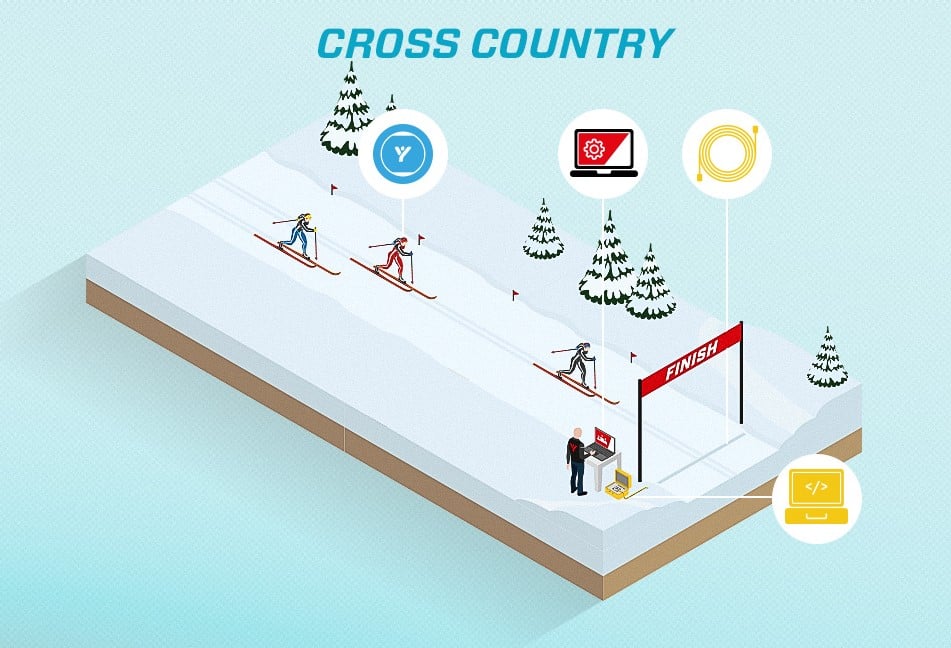
BibTag Setup
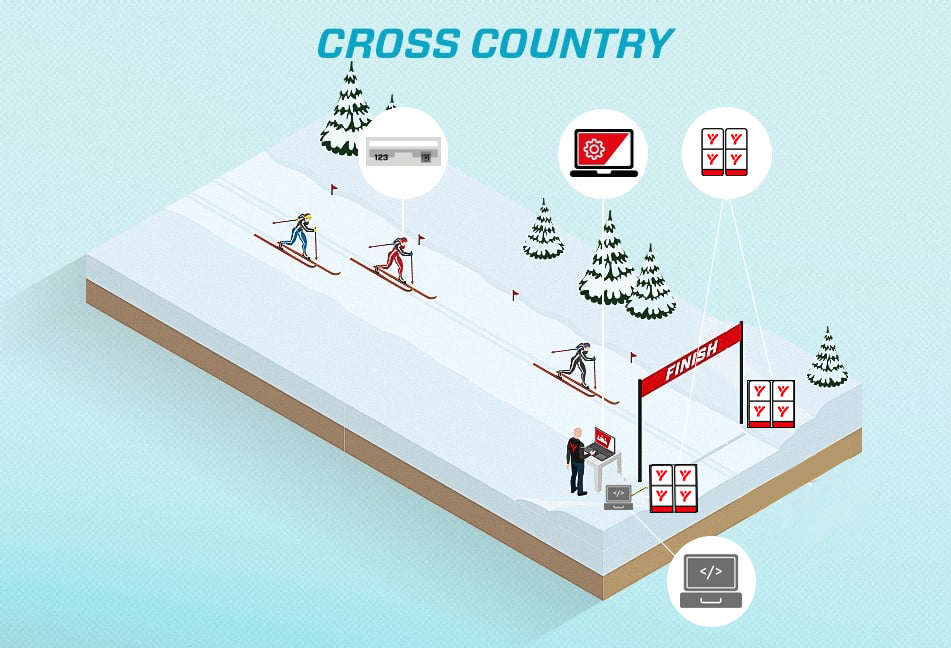
To time a cross-country skiing race effectively, you will need the following equipment:
Transponders/Tags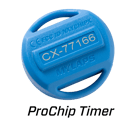

To identify each participant and to record the exact time at which they pass the start, finish, and intermediate timelines, every participant wears a transponder or a tag with a unique ID. Each transponder sends out a unique signal to the loops that are embedded in the track. Whereas each tag is activated and detected when the athlete passes by the antennas, that can be beside the track or overhead antennas.
Decoders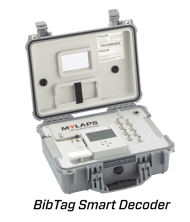
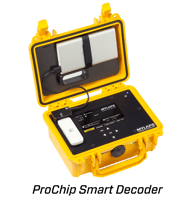
These are placed at the start line, finish line, and intermediate checkpoints. When athletes cross the antennas/loops, their passings will be detected. The decoder translates the data into usable information. It decodes all passings, saves the data, and sends it to an online server where the timing software can connect to.
Antennas/Loops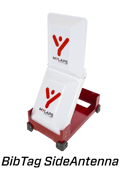
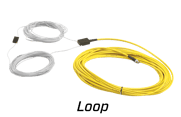
Antennas or loops are connected to the decoders and are set up at the start/finish lines and placed strategically at checkpoints along the course. Detection loops can also be embedded at points along the track, whereas the antennas are located on the side of the track or overhead. The antennas/loops detect the transponders as the athletes go over them and record the times accurately.
Timing Software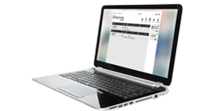
With the data being handled by the decoder, the gathered information can be used by the timer. This is done by using software that is specially developed for the decoder. The software is used to set up, time, create, and publish reliable and accurate results. Pick the software that is most fitting to your timing needs.
Photofinish Camera
Photofinish cameras are also commonly used in professional skiing races. In a high-speed sport like skiing, when multiple athletes cross the finish line at the same time, it is useful to have a photo finish camera in place as well as a detection loop and decoder.
By using the right tools and equipment, you can ensure accurate and reliable race timing for cross-country ski races.
Setting up for a race
Proper preparation is essential to ensure seamless timing for a cross-country ski race. Before the big day, it is crucial to set up the timing equipment accurately. This can involve installing antennas, embedding loops in the track, and setting up decoders, and other necessary equipment at the designated checkpoints.

Evodata setting up the overhead antennas at Sgambeda 2023.
.jpg?width=1200&length=1200&name=TL2_2342%20(2024-01-30T14_35_25.218).jpg)
The photo shows the cutting of the snow track for the installation of the loops at Marcialonga 2024.
For instance, at Marcialonga, the experts from Evodata went the extra mile by installing both ProChip and BibTag antennas at each of the 9 timing points on the course. They also incorporated 40 decoders (20 ProChip + 20 BibTag), along with 50 BibTag antennas for overhead and side coverage. The detection rate for both BibTag and ProChip was very close to 100% on all timing points. Moreover, to ensure precise results, a photo finish camera and two backup cameras were also installed at the finish line.
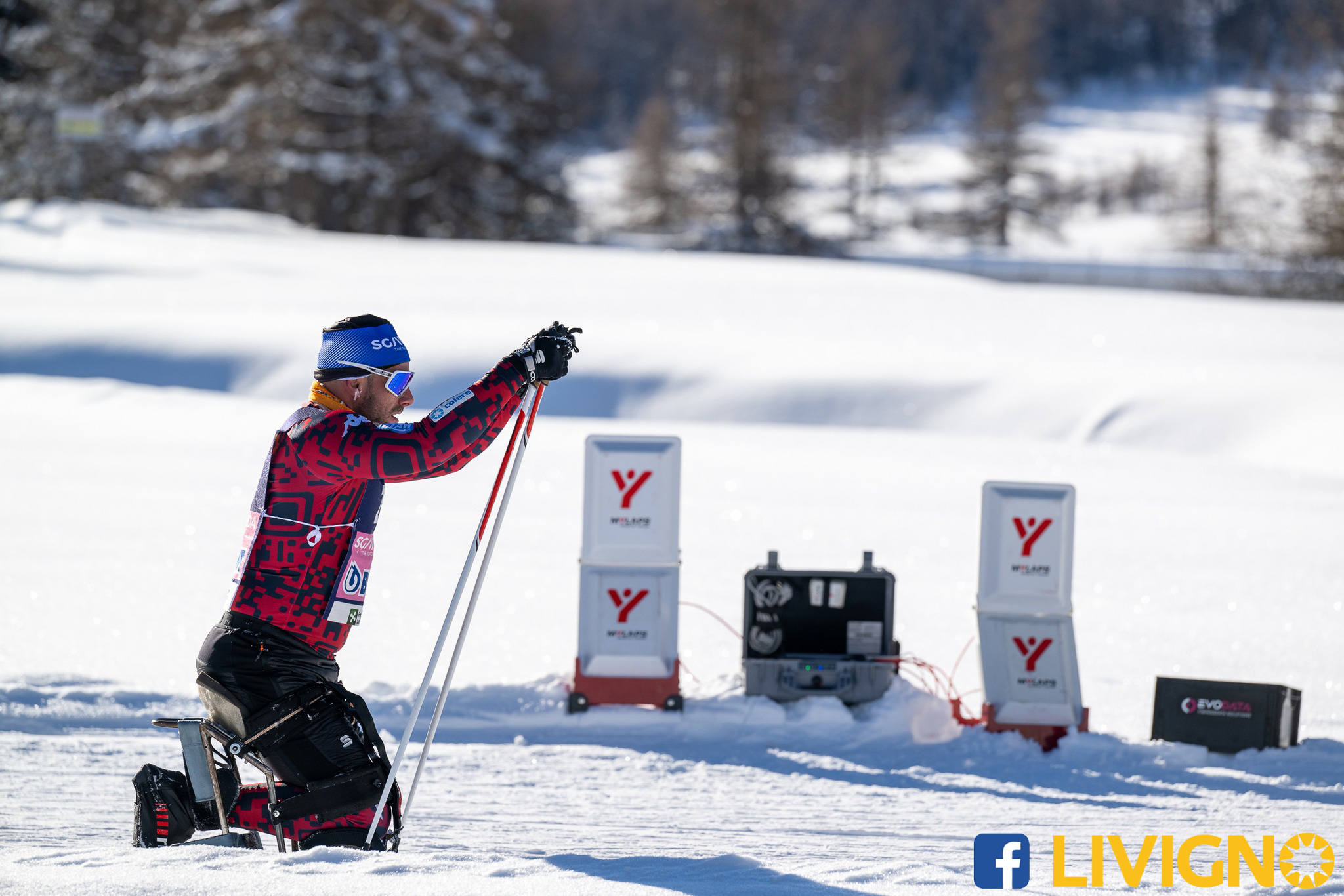
BibTag decoder and SideAntennas set up at Sgambeda 2023 timed by our partner Evodata
Challenges when timing a cross-country skiing event
Despite thorough preparation, there can be some common challenges that may arise during cross-country skiing race timing. Paolo Orestilli from Evodata shared insights on the hurdles faced when timing Marcialonga 2024.
Installation
The installation of the timing equipment can be a challenge, particularly for an active system where the loop has to be buried in the snow so it doesn't get damaged.
"The installation of the antenna, especially for ProChips, requires a bit of attention: the loop must be buried in the snow, protected and signaled, to prevent the snow groomers from cutting or damaging the antenna. Also, BibTag and overhead antenna must be installed carefully and always include a backup system, especially if the track is wide."
Weather Conditions
Harsh weather conditions like heavy snowfall or strong winds can affect the timing equipment. It is necessary to take precautions and ensure the equipment is properly protected. "Low temperatures can be an issue as well: we isolate all the decoders and have them all powered up or connected to generators."
By being prepared for these common challenges, you can overcome any timing issues that may occur during a cross-country ski race.
Well done! You now have a basic understanding of how to time a cross-country ski race! Hungry for more? Have a look here to learn more about timing cross-country skiing.
Get in touch!
Looking for more info or wish to contact one of our team members? Don't hesitate to contact us!

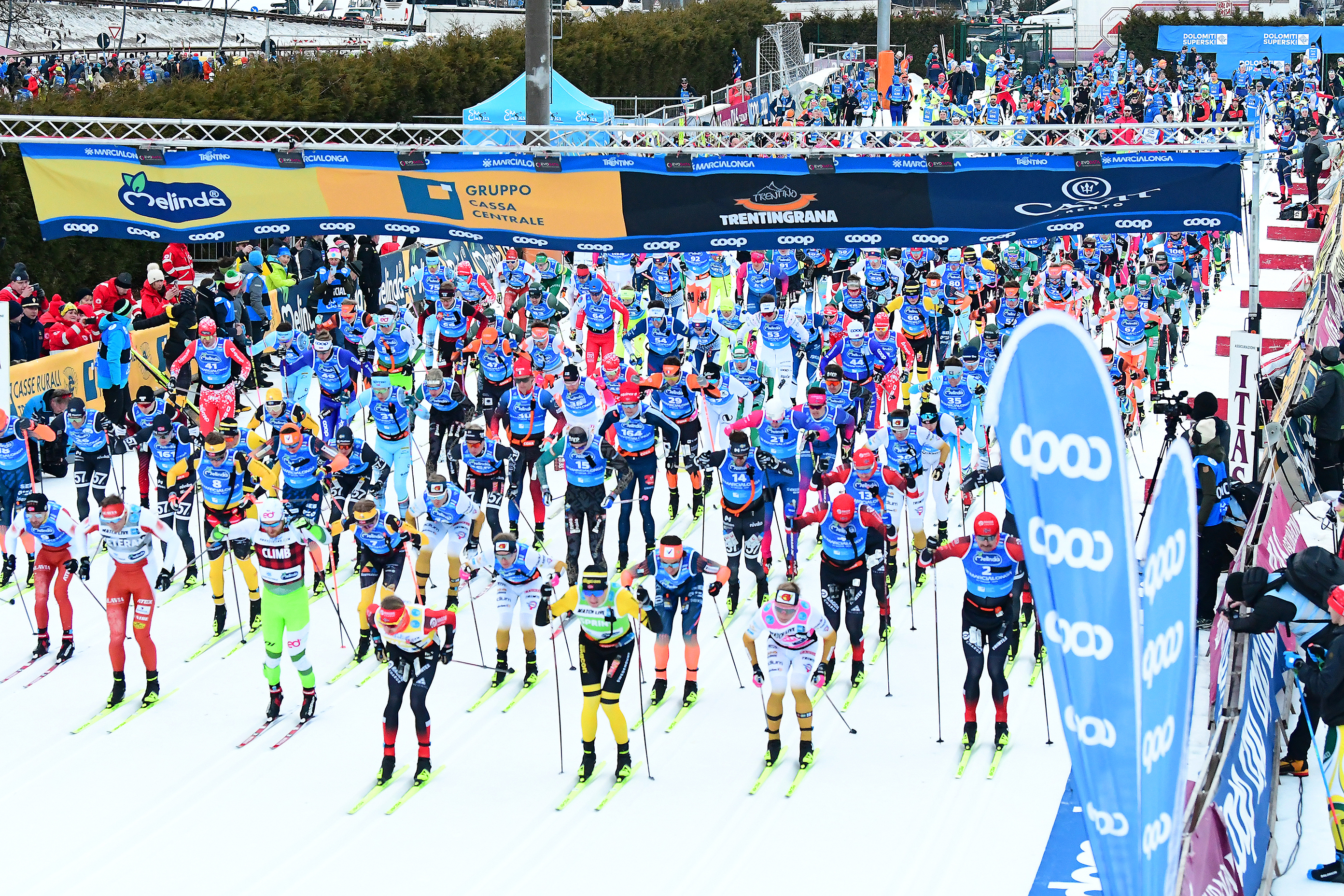
.jpg?width=2784&height=1856&name=marcialonga%202024%20partenza%20uomini%20ELITE%20(2024-01-30T14_35_13.280).jpg)